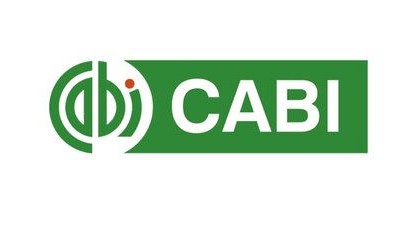PECTIN QUANTIFICATION FROM CELLULOSIC/LIGNOCELLULOSIC RAW MATERIALS BY FT-IR ATR ANALYSIS
Keywords:
cotton fabric, flax fabric, pectin, HCl vapours exposure, FT-IR ATR spectroscopyAbstract
This paper presents an accurate quantification by FT-IR ATR analyses of pectin content from cotton and flax raw woven fabrics. For this purpose, the investigated samples were exposed to HCl vapours. The relative absorbance
of pectin-specific bands was evaluated. The results showed an increase in the band intensity values located at ~ 1735 cm1 and a decrease of the one from ~ 1645 cm-1 after the exposure of the samples to HCl vapours due to the transformation
of the (COO-) linked with Ca2+ groups into acidic carboxylic groups.
References
Abdel-Halim, E.S., Fahmy, H.M., Fouda Moustafa, M.G., 2008. Bioscouring of linen fabric in comparison with conventional chemical treatment. Carbohydrate Polymers 74, 707–711.
Choe, E. K., Lee, M., Park, K. S., Chung, C., 2018. Characterization of cotton fabric scouring by Fourier transform-infrared attenuated total reflectance spectroscopy, gas chromatography mass spectrometry and water absorption measurements. Textile Research Journal 0(00), I - II.DOI:10.1177/0040517518790976journals.sagepub.com/home/trj.
Ciolacu, D., Ciolacu, F., Popa, V.I., 2011.Amorphous cellulose – structure and characterization. Cellulose Chemistry and Technology 45, 13-21.
Dai, D., Fan, M., 2010. Characteristic and Performance of Elementary Hemp Fibre. Materials Sciences and Applications 1, 336-342.
Dochia, M., Stanescu, M. D., Constantin, C.,2013. Calcium content indicator of scouring efficiency. Fibres & Textiles in Eastern Europe 21, 3(99), 22-25.
Dochia, M., Chambre, D., Gavrilaș, S.,Moisă, C., 2018a. Characterization of the complexing agents’ influence on bioscouring cotton fabrics by FT-IR and TG/DTG/DTA analysis. Journal of Thermal Analysis and Calorimetry 132, 1489–1498.
Dochia, M., Pustianu, M.,·Moisă,C.,·Chambre, D.,·Gavrilaş, S., 2018b. Sodium citrate as an eco‑friendly complexing agent for the bioscouring treatment of the Scien. Tech. Bull-Chem. Food Sci. Eng., Vol. 17 (XVIII), 2020, 20-25
cellulosic/lignocellulosic fabrics. ChemicalPapers 72, 1881–1888.
Dochia, M., Chambre, D., 2018c.Characterization of alkaline and enzimatically treated hemp fibres by FT-IR ATR spectroscopy.Scientific and Technical Bulletin, Series Chemistry, Food Science & Engineering 15(XVI), 18-22.
Eichhorn, S. J., Baillie, C.A., Zafeiropoulos,N., Mwaikambo, L. Y., Ansell, M. P., Dufresne,A., Entwistle, K. M., Herrera-Franco, P. J.,Escamilla, G. C., Groom, L., Hughes, M., Hill, C.,Rials, T. G., Wild, P. M., 2001. Review-Current international research into cellulosic fibres and composites, Journal of Materials Science, 36, 2107 – 2131.
Jering, A., Gunther, J., Raschka, A., Carus,M., Piotrowski, S., Scholz, L., 2010. Use of renewable raw materials with special emphasis on the chemical industry. ETC/SCP report 1/ 2010,http://scp.eionet.eu.int.
Karus, M., Kaup, M., 2002. Natural fibres in the European automotive industry. Journal of Industrial Hemp 7(1), 119-131.
Kozlowski, R., Batog, J., Konczewicz, W.,Mackiewicz-Talarczyk, M., Muzyczek, M.,Sedelnik, N., 2006. Enzymes in bast fibrous plant processing. Biotechnology Letters 28, 761–765.
Manaia, J.P., Manaia, A.T., Rodriges, L.,2019. Industrial Hemp Fibers: An Overview. Fibers 7(12), 106-121.
Ouajai, S., Shanks, R.A., 2005. Composition, structure and thermal degradation of hemp cellulose after chemical treatments. Polymer Degradation and Stability 89, 327-335.
Perepelkin, K.E., 2005. Polymeric materials of the future based on renewable plant resources and biotechnologies: fibres, films, plastics. Fibre Chemistry 37, 417-430.
Pursley, D., Lay, L., Maloney, J., Cudd, S.,Owens, A., Kerr, J., Sikander, Z., Radvansky, S.,2005. Cotton – the fibre of our web quest, p.14.
Puşcas, E.L., Stănescu, M.D., Fogorasi, M.,Dalea, V., 2002. Dezvoltarea durabilă prin protecţia mediului şi biotehnologii textile, Ed.Universităţii Aurel Vlaicu Arad, pp. 1-17.
Subramanian, K., Senthil Kumar, P., Jeyapal,P., 2005. Characterization of ligno-cellulosic seed fiber from Wrightia Tinctoria plant for textile applications—an exploratory investigation.European Polymer Journal 41, 853–61.
Summerscales, J., Dissanayake, N.P.J., Virk,A.S., Hall, W., 2010. A review of bast fibres and their composites. Part 1 – Fibres as reinforcements. Composite A 41, 1329-1335.
Terpáková, E., Kidalová, L., Eštoková, A.,.Čigášová, J., Števulová, N., 2012. Chemical modification of hemp shives and their characterization. Procedia Engineering 42, 931 –941.
Wakelyn, P.J., Bertoniere, N.R., French,A.D., Thibodeaux, D.P., Triplett, B.A., Rousselle,M.A., Goynes, W.R., Edwards Jr., J.V., Hunter,L., McAlister, D.D., Gamble, G.R., Cotton Fibers. In: Handbook of Fiber Chemistry. 3th -ed, Menachem L. editors. Taylor & Francis Group,New York, 2007, pp. 523.
Wang, Q., Fan, X., Gao, W., Chen, J., 2006.Characterization of bioscoured cotton fabrics using FTIR ATR spectroscopy and microscopy techniques. Carbohydrate Research 341, 2170–2175.
Downloads
Published
Issue
Section
License
Please send the manuscript prepared with the MSWord Template, together with the Cover Letter to the editor-in-chief:
Dana Copolovici (e-mail: dana.copolovici@uav.ro)






